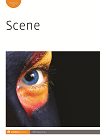- Home
- A-Z Publications
- Scene
- Previous Issues
- Volume 3, Issue 1, 2015
Scene - Volume 3, Issue 1-2, 2015
Volume 3, Issue 1-2, 2015
-
-
Lord of the Rings – the Musical as a world musical product or just a British export?
More LessAbstractThe stage musical adaptation of J.R.R. Tolkien’s The Lord of the Rings, began in Toronto, Canada in 2006 and then transferred to London ending its run there in 2008. It is due to embark on a new world tour in 2015.
Matthew Warchus, British theatre director created an extravagant, three-act stage production which received its premiere at Toronto’s Princess of Wales Theatre in March 2007. The production designed by Rob Howell, premiered in London in May 2007 at the Theatre Royal, Drury Lane and ended its run after 492 performances in July 2008.
The musical was the first stage adaptation of the literary epic and followed the hugely successful film trilogy. A new tour, is being designed to accommodate theatres around the globe, and will launch in New Zealand in 2015 and although the countries of the tour have not been announced, there is much interest amongst Tolkien fans for its come back. The new touring version is billed as retaining the unique, thrilling and spectacular theatrical magic of the original production. The music is by Academy Award winner A.R. Rahman (Slumdog Millionaire), Värttinä and Christopher Nightingale. The lyrics and libretto are by Shaun McKenna and Matthew Warchus. The Lord of the Rings – the Musical has lighting by Paul Pyant, special effects by Greg Meeh, sound by Simon Baker and magic illusions by Paul Kieve.
This article reviews the work as commercial product, revival or just colonial export of British or Canadian scenic motifs and stagings.
The production began in Canada and reviews wavered between praise and defamation, between a spectacular production of sets and a celebrated new musical score. The link beneath is for the reader to get a sense of the production style and values, if you haven’t seen the musical, yet.
https://www.youtube.com/watch?v=RaHRFlPCtsU
-
-
-
Canadian actor: Horror death and cooperation
More LessAbstractA first-person narrative written by Julian Richings, reflecting on his transition from the British theatre system of the 1970s and 1980s to the reality of working in Canada. The article covers a span of three decades of emerging Canadian cultural identity, and the daily reality of theatre, television and film that make up an actor’s life.
-
-
-
Galleries for life: Responses to nature dioramas and sustainability exhibits at the Royal Saskatchewan Museum
More LessAbstractGalleries for life: Responses to nature dioramas and sustainability exhibits at the Royal Saskatchewan Museum
-
-
-
Nature connections: Cultural heritage, identity and wellbeing in Vancouver, Canada
More LessBy Alison OddeyAbstractI came to Vancouver, Canada in March 2014 to give a paper on ‘The Cultural Value of the Arts for Health and Well-Being’ at the 4th International Conference on Health, Wellness & Society: Holistic Health 1 at British Columbia University. I knew absolutely nothing about the First Nations people, their arts, culture and history, and how this relates to a Canadian identity. What I know now is that the cultural identity of many of these peoples is linked to their language, and that of the remaining thirty-two indigenous languages in British Columbia, some are near extinction. For these peoples, their language is their way of being and who they are. It is encouraging to learn that projects which promote language revitalization create the opportunity for cultural well-being, through the cultural connections via the traditional values embedded within each indigenous language. In the same way that we know that Western medicine treats the body, not the person, the First Nations peoples’ loss of language is holistically integrated into the whole of their history of colonization, beliefs, medicine, spiritual and cultural practices. Their cultural heritage is interwo-ven to their wellbeing.
-
Most Read This Month

Most Cited Most Cited RSS feed
-
-
Critical costume
Authors: Rachel Hann and Sidsel Bech
-
- More Less

